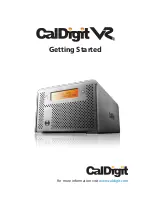
were moved to spare space. Specifying
-nold
prevents the allocation of the newly added
physical disk and allows chunklets to be moved back to the new disk. After chunklets have
been moved back to the new disk, the administrator can allow LDs to be allocated again by
issuing the
setpd
command.
•
-f
: Do not prompt for confirmation when attempting to admit disks from other systems.
•
WWN: Indicates the WWN of the physical disk to be admitted. If WWNs are specified, only
the specified physical disks are admitted. Otherwise, all available physical disks are admitted.
For example:
ci% admitpd
20 disks admitted
When disks are admitted to the system, the System Manager checks to see if they are SEDs. If they
are SEDs, a cryptographic erasure is executed on the new drive, and ownership is taken (providing
encryption was already enabled).
For more information about the
admitpd
command, see the HP 3PAR Command Line Interface
Reference.
Using the
controlencryption
command
Enabling Encryption
Because the key-file must be saved on the local disk (a customer PC or server), enabling encryption
using the CLI must be performed from an HP 3PAR OS CLI Client running on a PC or server, or
through the HP 3PAR MC, not from an SSH connection.
To enable encryption using the HP 3PAR CLI, issue the following command:
# controlencryption enable <backup filename>
To enable encryption using the HP 3PAR MC:
1.
Under
Command Actions
, select
Systems
.
2.
In the
Encryption
drop-down menu on the toolbar, select Enable
Encryption...
.
To enable encryption using the Solaris or Linux CLI, issue the following command:
cli% controlencryption enable backupfile
To enable encryption using the Windows CLI, issue the following command:
cli% controlencryption enable C:\\backupfile
When encryption is initally enabled, the system verifies that:
•
The system is licensed for data encryption.
•
All drives in the system are SEDs.
•
There are no degraded or failed drives in the system.
If all of these conditions are met, the system generates an authentication key and returns the
backed-up key file.
You will be prompted to twice for the password for the backup file. Backup is part of the
encryption-enabling operation.
After the backup of the authentication key is acknowledged, the key is set on all the drives in the
system.
For more information about the
controlencryption
command, see the HP 3PAR Command
Line Interface Reference.
114
Data Encryption
















































